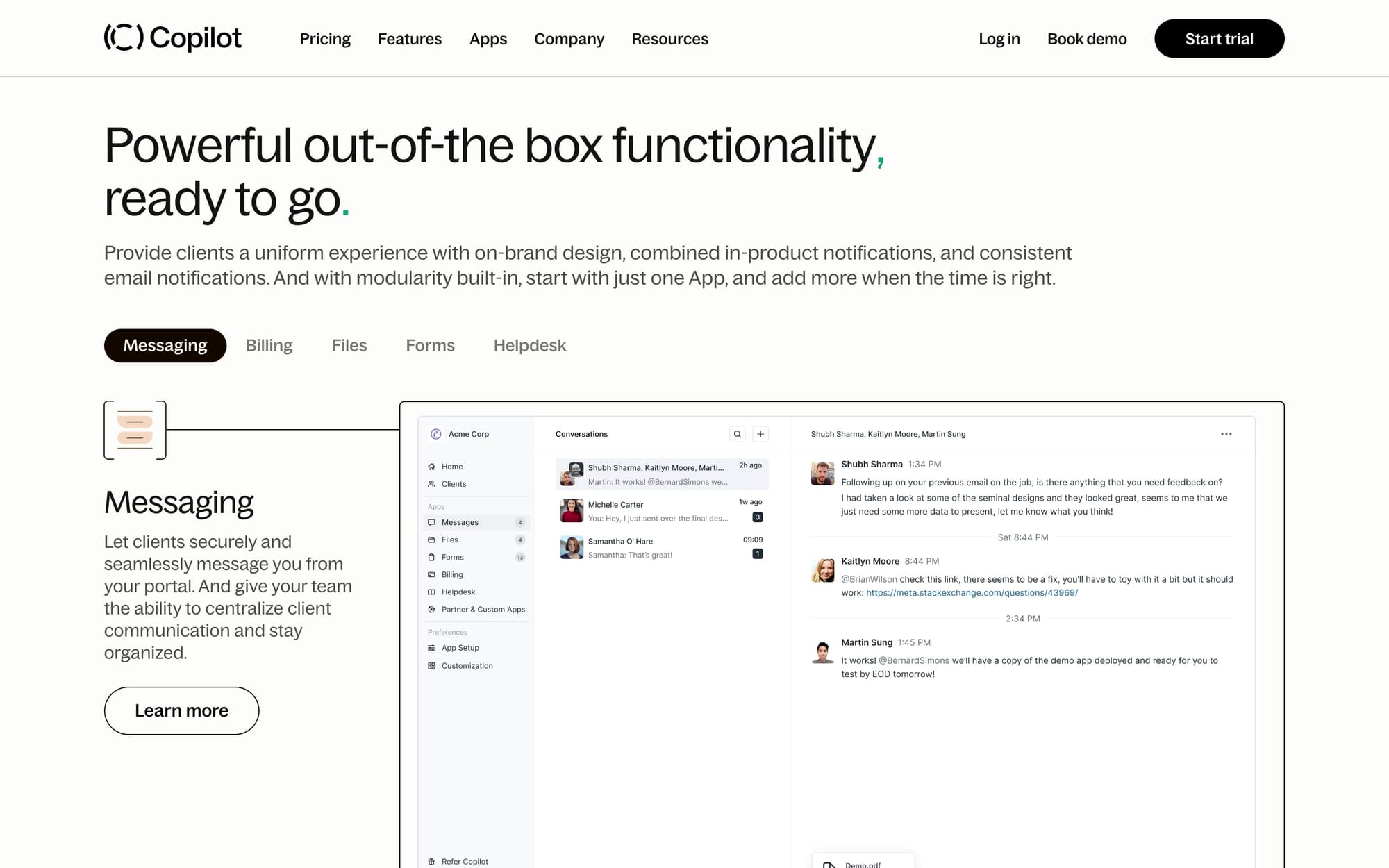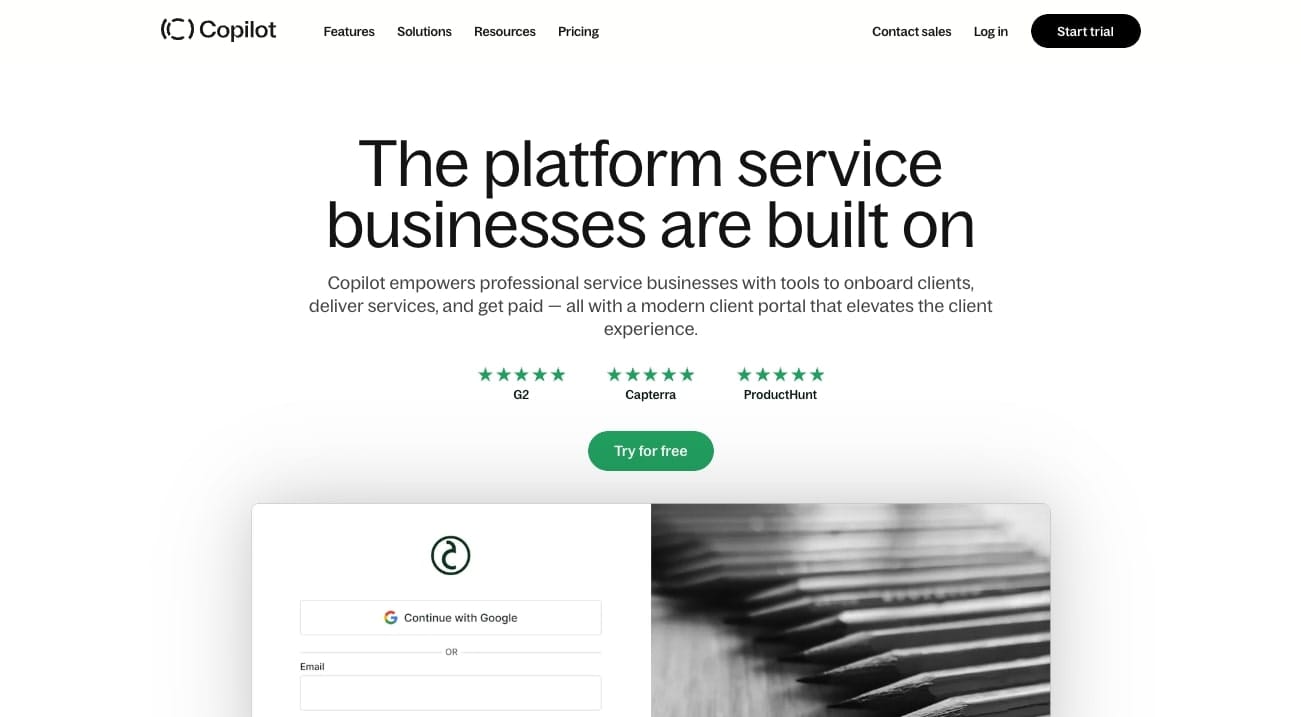
Five years ago, I went to a marketing mastermind in San Francisco and got to meet some of the early employees at companies like Facebook, Quora, and Pinterest.
They talked about how tech companies grow and what separates businesses that succeed and prosper from the ones that die out.
It was a profound experience, and it completely changed the way I view customer and client acquisition.
So today, I want to pay it forward.
I made a ton of mistakes early on. But today, I’m glad to say I have an (almost) perfect customer retention rate. So, I decided to reflect on what has (and has not) worked for me over these past couple of years. And I’ve distilled them into six strategies that walk you through.
Get ready, because this is the article I wish I had when I first started my agency over two years ago.
Why client retention is the most important thing
When I walked out of that mastermind in San Francisco, I had a paradigm shift in the way I thought about customer acquisition for businesses. And that day, I learned that the largest tech companies attribute their success to user retention. I also learned that (a lack of) retention was the silent killer of most businesses.
As in, having bad client retention is like pouring water into a bucket with holes in it. It order to keep water in the bucket, you will have to constantly work on pouring water into it. And eventually, that stream of water will get less as you exhaust your acquisition channels. With holes in the bucket, you’ll eventually come to a point where you’re losing more water than you’re able to add — rendering the bucket useless.
What I learned about client retention was that it creates a growth loop. When you retain a client (or customer) for a long time, it means they’re getting value from your products and services. And the longer someone receives value from you, the more likely they are to recommend you to others and bring you up in conversation.
This is why creating a great product or service should be at the core of your business. Sure, marketing is extremely important. But your marketing efforts will go to waste (in the long term) if you aren’t retaining your customers. And if you have a retention problem, it puts your business in a tough spot. It shows that something within your product or service is not resonating with clients.
So, to bring it back, client retention is important because it shows that your services are valued in the market, it helps compound your business revenue, and it helps you acquire more clients through word of mouth from your happy customers.
How do you retain clients long-term?
There are many ways to retain your clients, but the best way to get them to stick around for the long term is to provide an exceptional service that brings them real business results.
In other words, clients will generally pay you for as long as you are providing them value. This value is (usually) either in the form of helping them make more money or helping them save money.
But, I’m not just going to say that providing great results is the only thing that keeps your clients around. I know this because I’ve experienced this first-hand. In fact, my first long-term client churned after a couple of months because they “ran out of money.” But, I knew there was something else going on.
While they were getting results, their CEO did not understand the value of content. We parted ways, and a few months later when the content I had produced started to rank well in Google and drive them more revenue, they reached back out to resume the relationship.
In this situation, I learned that providing a great service is important (and if they leave they may eventually come back). But, what’s also important is something I missed that I will get into in step four below. Alright, let’s get into it.
6 strategies to retain your clients for the long term
Here are six client retention strategies that work:
- Build a friendship based on trust
- Provide amazing results
- Provide a personalized client experience
- Communicate and educate your clients
- Go above and beyond (occasionally)
- Ask for feedback
Alright, let’s get into these!
1. Build a friendship based on trust
People do business with those they trust. At the last company I worked at, I asked one of the co-founders what they look for when they’re hiring someone. He responded with, “I ask myself if I’d be down to grab a beer with them in my free time.” In other words, he hired people that he saw himself being friends with.
While everyone has different hiring philosophies, this got me thinking. Friendship is built on some level of relatability and trust. Chances are, if you don’t trust someone you won’t befriend them
I came to realize that personal relationships translate really well to business relationships. Business is all built on trust. Your customers trust you enough to pay you. And businesses trust other businesses enough to do business with them. There’s a shared value and goal.
I truly believe that the best business interactions are built on the foundations of friendship. This is why I put this as the first strategy. Business is an art of both soft and hard skills. You need hard skills to provide clients with results. But you also need the soft skills to come off as likable and trustworthy.
Imagine this, you’re working with an agency that is been absolutely crushing it for you. But, they’re late to every client meeting, they’re a bit rude in their interactions with you, and you both have different worldviews. But, they’re driving tons of new business and revenue for you.
On one end, you don’t want to end the relationship because they’re helping you make more money. But at the same time, every interaction is mentally draining. In this case, you may continue to do work with them, but there’s a good chance you won’t want to refer them to others.
This is why friendship is the basis of customer loyalty and retention. Without it, you’ll have a soul-less business that is only focused on profit. And there’s more to life than pure capitalism.
2. Provide amazing results
Once you have a basis of trust down, the next best way to keep a client around is to get them real business results. This one is pretty self-explanatory, and the approach will vary based on the types of services you provide.
For example, I help clients grow their businesses with helpful content that ranks in Google — creating articles just like this one. And the way I track how things are doing is by looking at organic traffic growth, the number of new sign-ups, and the number of new paying customers to whatever service my clients offer.
My KPIs are quite clear, and they are clear to my clients as well. This allows me to know when things are working. And just the fact that I focus on getting my clients results, while also only working with people I see as friends, I am able to retain my clients for years. Since, that first client that churned after 2 months, I have yet to have a client churn. And I often end up parting ways on my own terms.
The main takeaway I got from providing a great service is to make sure your ICP is clear. I only work with clients I know I can get amazing results for. If I was focused solely on signing as many clients as I could, I would make more money in the short term. But, I would also burn many bridges and hurt my business reputation. So, I’m very selective with whom I work with. And, in return, it yields great results that keep clients around for a long time.
3. Provide a personalized client experience
On top of friendship and great results, another way you can woo clients is to make them feel special. You do this by hyper-personalizing everything. From proposals with your client's brand colors on them to presentations that sound like your client’s brand and voice, the small details are what matters.
One way I began to personalize my services was to use a white-label client portal platform. In fact, that platform was Copilot! Hence why I love working with Copilot. It’s a product I actually use.
Copilot allows you to create a custom client portal for each of your clients. This way, clients can log into their own portal whenever they want to view things like payments, reports, messages, files, and more.

It creates a “home” for your client interactions. And with Copilot, you can customize your portal to fit your client’s brand colors. This way, it feels like their own special place. You can also embed reports and integrate them with any third-party tools your client may already be using — making it feel super personalized.
If you want to check out Copilot’s power before you sign up, be sure to play around with the demo portal here!
4. Communicate and educate your clients
This is a client retention strategy that doesn’t get enough love. In fact, I never paid too much attention to this until I realized it was the missing piece that caused my first big client to churn.
I used to think that if I just put my head down and worked on the things I thought were important, that’s all that mattered. To me, I value hard skills over soft skills. But, I came to realize that it’s actually not the best approach when it comes to client relationships.
Just because you know something really well, it doesn’t mean your client knows them as well. There’s a reason why they hired you as an expert. Many times, clients don’t know how you approach your work. And that’s okay. But, you need to explain the why behind your actions.
The client I had that churned had some early signs of success when they decided to end the contract. What I failed to do was communicate properly that things like SEO take a bit of time and that they had to trust the process. I sort of let my client make judgment calls when I should have been the one educating them on why I was doing the type of work I was.
In the end, their content started to rank really well and they came back asking to renew the contract. But at that point, I had too many clients and had to decline. And what that experience taught me was that educating your clients is extremely important.
Us service providers often build a deep intuition in our work. We know what works and what doesn’t. We let this intuition guide us in the recommendations we provide to our clients. But our clients don’t understand this institution, and it’s our job to communicate it clearly in words. This way, we reinforce the first strategy on this list — trust.
Educating your clients, and having them understand where you’re coming from, is the first step to having clients trust you and see the value in your experience and intellect. It’s a big lesson I had to learn and one I hope you don’t overlook.
5. Go above and beyond (occasionally)

Moments of delight is what keeps people excited and coming back for more. Customers often feel connected to brands that give them an experience beyond what they were expecting. You can take these consumer strategies and apply them to B2B.
Going above and beyond for a client will look different based on the service you provide. But this can include things like adding extra work free of charge, giving your clients gifts out of appreciation, offering discounts, and more.
But, you also want to be careful here. If you go above and beyond too often it will start to become the baseline for what your clients expect from you. The goal is to occasionally give them an experience they were not expecting (in a good way). This helps boost the overall customer experience of your services.
Leveraging this strategy is what creates loyal customers. It shows that you’re in this game for more than just money. It shows that you genuinely care about your client’s success and want to foster a lasting relationship.
6. Ask for feedback (on how you can improve)
I interacted with a lot of different agencies when I used to work in-house at a company. And one thing I rarely ever saw was the agency’s desire for improvement.
It’s funny because you see this all the time with products, especially in SaaS. Companies will send out customer feedback surveys and use them to influence product roadmaps.
But, for some reason, it’s fairly underutilized when it comes to freelance and agency work. I think as service providers we can become tunnel-visioned into believing that we have all the answers to our client’s problems. Ego can also get in the way.
When you ask a client for feedback, it shows a level of humility and a willingness to improve your services and client relationships.
You can ask things like:
- Do you have any feedback for me?
- Is there something that’s been on your mind that’s bothering you?
- How would you rate our interaction so far on a scale of 1-10? And what would be a level 10 service for you?
- Is there anything I’ve done that you liked and would like to see more of?
- Is there anything I’ve done that have haven’t liked and wouldn’t want me to continue doing?
The list can go on. But the main takeaway is that you want to get a pulse on where your client stands. This helps you recalibrate your services, personalize them better, and allow you to uncover any blind spots or issues before they come up.
This is one of the things I wish I had done with my first client that churned. Sometimes, your point of contact may not like confrontation. So if you’re doing something that bothers them, they won’t bring it up. And, you won’t even know it's bothering them. Then, when they’ve had enough, they’ll churn and you won’t see it coming.
So, it’s extremely valuable to check in from time to time and ask your clients how they’re feeling and if there’s anything you can do to continue giving them a great client experience. Because, without a great experience, they’ll eventually churn.
Conclusion
If you made it this far, I’m forever grateful. I hope you learned something from these six customer retention strategies. They’re strategies based on my own experience running a service-based business for the past two years.
In the end, I learned that all you need to focus on are four core things:
- Consistently bring results for your clients.
- Work with people you see yourself being friends with outside of work.
- Educate clients on your way of thinking and why you’re recommending the things you are.
- Regularly ask for feedback to improve your services.
If you can do these things well you’ll be on your way to creating a fruitful business that’s actually fun to run. Your customer retention rate will be healthy, your existing customers will help you bring in more business, and your customer lifetime value will increase.
All of these will keep you in business for the long term.

And, if you want to take it a step further, personalizing your client experience with a custom client portal will help you stand out from other competitors. So, if you got any value from this, be sure to also check out Copilot and see what it can do for your business!
Share this post
Sign up for our newsletter
Subscribe to our newsletter to receive emails about important announcements, product updates, and guides relevant to your industry.
